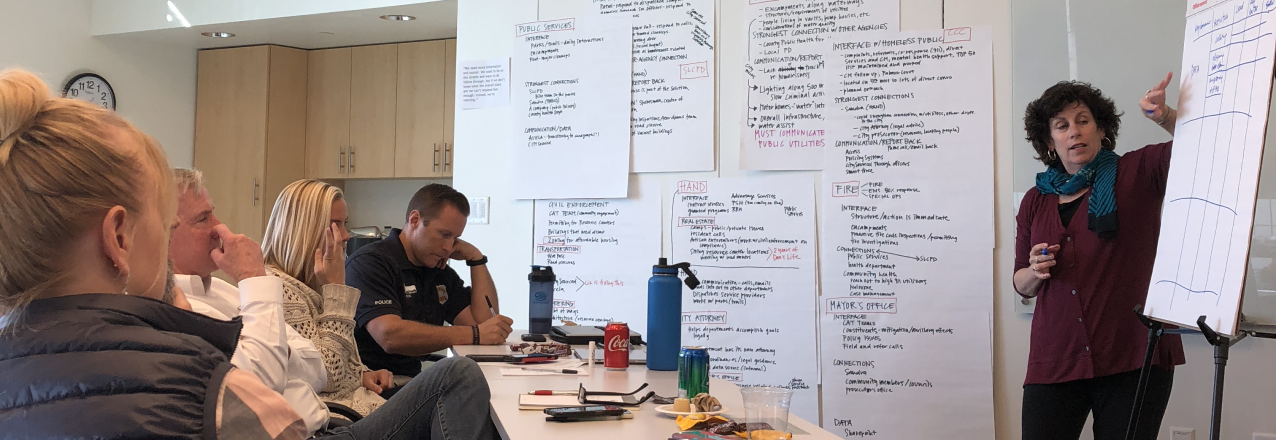Cloudburst has carried out consulting engagements across the United States in communities that are grappling with decision-making and leadership. These projects are related to homelessness, and the mandated public/private partnerships known as Continuums of Care which are required by the U.S. Department of Housing and Urban Development (HUD) as a condition of receiving funds. Here are five important approaches that my colleagues and I have used over the years to help communities chart their own productive course forward.
- Acknowledge tensions. In communities where leadership has skewed toward one large player or another—often the local government—advocates, consumers, and providers may feel they’ve been left out of important conversations, disempowered, and distrustful. For a Continuum of Care or other collaborative entity to move forward on leadership and decision-making, it’s crucial to get thoughts, feelings, and fears out on the table. Unexpressed feelings of concern can cause issues in a system-change process down the road.
- Understand what is required. In communities where communication has been uneven or lacking there will be widely differing levels of understanding of the basic requirements coming from the federal government. Going through a transparent and open learning process as a community provides an even playing field and greater clarity about where attention must be paid to come into compliance and achieve better system-level results.
- Get inspired by what works in other communities. While every circumstance is different, there are observable ways in which one community’s restructuring—and the achievements arising as a result—can motivate a community seeking to improve its system and produce better outcomes for residents and organizations. As consultants, we can bring in examples to help illuminate different options and strategies.
- Implement a robust community process to put compliant governing structures in place. To make changes to the structures and processes by which decisions are made, a community must already have clear guidelines in place. If existing governance documents are not compliant with funders’ requirements or do not involve a broad enough swath of stakeholders, the community will need to revise the documents. Take the opportunity to develop and publicize an open, transparent process to revisit and strengthen governance documents. Build in a period for formal public input of draft revisions and incorporate proposed changes to increase community participation.
- Engage directly with the community. It’s the people who make their communities strong and resilient. Undertaking significant changes in investment, or moving into a data-driven planning stance, can test a community’s ability to work together. Be sure to engage with the community by following these steps – acknowledgement of prior tensions, collective learning, and restructuring for greater representation – and this can ease the challenges of reshaping service-delivery systems.
Written by Judy Perlman, Housing and Community Development Subject Matter Expert. Judy Perlman leads teams of housing and homelessness experts active in multiple US communities, facilitating efforts to help communities optimize their uses of U.S. Department of Housing and Urban Development (HUD) and other funds to address local needs.


Your Comment
Leave a Reply Now